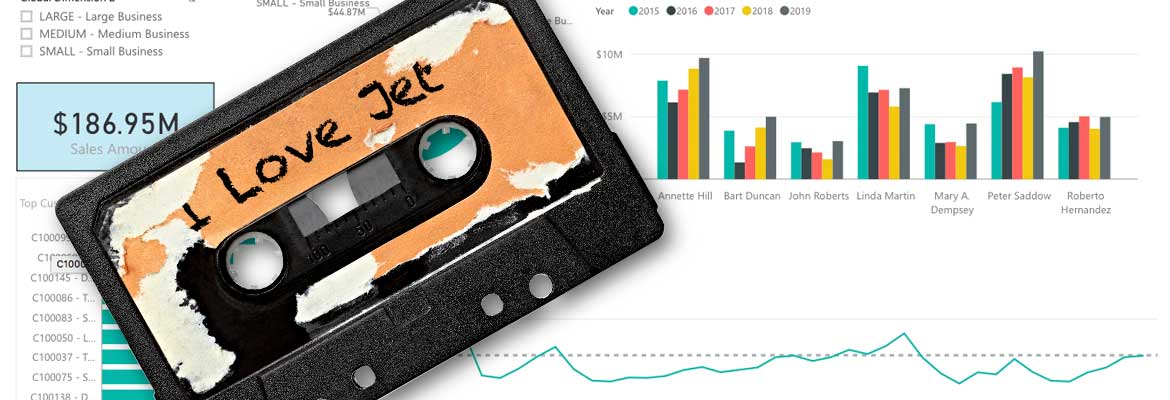Business Intelligence Cubes

The Data Revolution has come a long way since our original publishing of “What Are Business Intelligence Cubes” back in 2013. The terms “BI,” “analysis,” and “data driven” are nearly commonplace now among business conversations and exchanges. But it’s okay to still ask about the foundation of business intelligence for Microsoft Dynamics NAV, GP, or AX. It is, after all, more important than ever to understand in order stay atop the competitive landscape.
You may be getting your financial statements. You may even be obtaining your warehouse inventory reports. So you may be wondering, “What do these BI ‘cubes’ have to do with the story?” And why do you need to pay attention?
Turns out, it’s a whole lot.
Take a look at this week’s Throwback Thursday article to revisit the still—arguably even more—relevant look at what business intelligence cubes are and why you need them now.
What Are Business Intelligence Cubes?
Most of us use databases in our daily lives, whether we know it or not: ERP systems, SQL databases, CRM systems, and even Excel files that store data as a “database,” so to speak. These databases are wonderful for collecting and storing information, but not always so great at showing that data in a meaningful way when we want to analyze this information in-depth. Why is this, you ask? Because databases are always designed to get data inserted in the most efficient manner, which frequently creates headaches when users try to get interesting data back out.
Messy, Messy Tables
These databases store information in tables, most often in hundreds or thousands of different tables. These tables relate to each other in sometimes esoteric ways (think of an Excel spreadsheet with 60 worksheets and references pointing all over the place). When we want to report on that data in a sales-by-salesperson report, for example, we must understand the relationships between these tables and their dependencies. We take the salesperson’s name from the Salesperson table, the items sold from the Sales Transactions table, the product description from the Product table, and so on until we come up with a report that makes sense.
This process of building reports from multiple tables can be time-consuming and tedious—if not utterly impossible—especially for non-technical staff. Reporting on multiple tables can cause performance issues as well, especially with large data sets. But now we have cubes. Simplified, cubes are sections of data built from tables in your database. They contain calculations and are often grouped around specific business functions; one cube for sales, one for purchasing, another for inventory, and so on, with each cube containing pertinent and useful metrics for that particular area of the business.
High Performance Cubes
Cubes are a tremendous benefit because of the way they are structured: The heavy lifting is already done through pre-calculation. When you want to get answers from your data, instead of searching multiple tables in your database, your request will go straight to the cubes. Your report that used to take five minutes to run now takes just five seconds, and the end users no longer need to bother with how all of the tables need to be joined together.
When organizations start to collect data in multiple databases, the size of the data sets tends to grow exponentially. Running a standard query against large data sets can cause serious performance issues, which not only sacrifice productivity, but can also lead to users abandoning reports altogether. When this happens, important insights are discarded because the business users simply do not have the time for the data to be compiled. The fascinating thing about cubes and the way they are designed is that whether you are looking at yesterday’s sales transactions or sales over the past five years, it takes the same amount of time to run these two reports, which is just a few seconds in most cases. Why? Because of the power of pre-calculating the values.
Increase User Adoption
Are you hoping to roll out business intelligence for your sales force or purchasing department? Cubes are designed to allow non-technical users choose from a number of pre-calculated items to uncover new insights, and adjust tactics and decisions on the fly. Chances are good that these teams will have difficulty joining multiple tables together with a standard report, but with business intelligence cubes, they can just drag and drop the metrics and dimensions that matter to them into their own dashboard. IT teams appreciate cube environments because end users learn to create their own reports, freeing up the technical staff to do, well, technical things.
Ease-of-use is what gets departments and companies on board with business intelligence. In many cases, this kind of wide user adoption starts a data revolution within a company as more and more managers rely on these systems to help them make fact-based decisions. Cubes help regular business users like us take advantage of all the money we’ve spent on data collection and storage. Now we can use the data to run our business more efficiently and effectively without having to enlist or tie up high value resources like developers, specialists, programmers, and the IT department. This is putting the power to make decisive “game changing” decisions back in our own hands at a fraction of the cost of past lengthy, manual, and time consuming processes, if we had access to the data at all.
Want to know more about business intelligence and cubes built specifically for Microsoft Dynamics? Watch a demo now.






